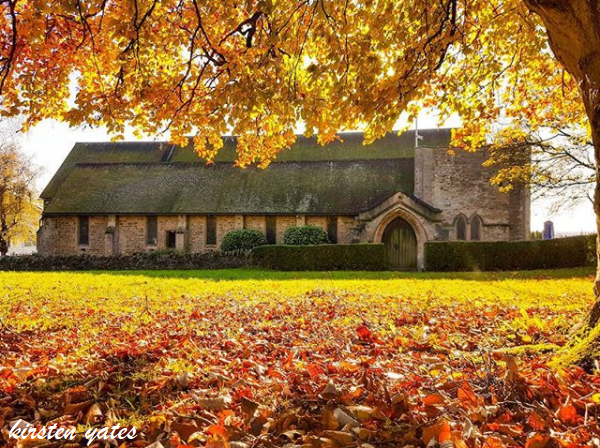Church Micro 3802...Huthwaite Traditional Geocache
Church Micro 3802...Huthwaite
-
Difficulty:
-

-
Terrain:
-

Size:  (micro)
(micro)
Please note Use of geocaching.com services is subject to the terms and conditions
in our disclaimer.
Church Micro 3802 - All Saints, Huthwaite

Built under the Church of Rome and following ancient Sutton parish roots at Saint Mary Magdalene, Anglican church leaders coming under Southwell Diocese recognised growing needs to begin separately accommodating a rapidly increasingy number of 19th century Hucknall Huthwaite parishioners. The Sutton clergy influenced construction of Huthwaite's first National school house which allowed Rev Bellairs to introduce Sunday services into this villa. But even 1873 funds to promote our own curate seem a slow reaction against strongly established Methodist factions already building village chapels.
Folklore did maintain belief founded by L Lindley 1907, how church foundations were initially laid over the former Huthwaite windmill atop Mill Lane. That prominent height could indeed be seen as being commonly favoured for allowing distant sighting of a parish steeple, sited nearer God above. Plus, it would also be close the Huthwaite Cemetery grounds, opened earlier by the Urban District Council. Nevertheless, it was Rev J B Hyde, Vicar of Sutton-in-Ashfield in 1896 who identified need and successfully adopted plans to establish Huthwaite with its own parish church, influentially aided.
The local Unwin-Heathcote family very generously donated a large land plot atop Common Road. Given a suitable site, allowed these proposed plans to be drawn up by Mr Whitcombe of London.
The Duke and Duchess of Portland jointly honoured a ceremonial laying of foundations for this sacred edifice. Their attendance made a grand days occasion, treated like a public holiday in Hucknall Huthwaite according to detalied reports. The stone they laid into the west wall facing the road, dates that occasion to 22 November 1902. Its weathered inscription just remains visibly legible to this day.
Church facing used Mansfield stone, but base construction uniquely used a dense rock dug off Deep Hard workings at New Hucknall Colliery. This was freely hewn and hauled by local colliers. Such act gave the church pride of place among the mining community, while the pit managements graciousness did also silently benefit from the unpaid removal of unwanted stone that blocked coal seam access.
Doors into All Saints church were opened on Saturday 12 December 1903. That occasion was marked by a dedication service provided by Dr Ridding, Lord Bishop of Southwell diocese. Huthwaite was made a separate ecclesiastical parish April 1905 and this building consecrated that following 4th November by the Bishop of Derby, a Dr Were. He also incidently instituted Huthwaite's first vicar named Francis Newbold Beswick. The priest had been resident here for some 6 years prior, and was to see this prospering mining township became a district chapelry into April 1906.
Displayed internally are various acknowledgements and fitting memories behind local causes, including Rev Beswick's services into 1918. Pit manager Simeon Watson firstly provided a pulpit, lectern and choir stalls. Stained windows becoming dedicated to his young son among others. Rev W H Warrington supplied a processional cross. plus this later plaque for efforts of local miners.
Adding the donated albums of Dr Hill and Mrs Wallace, these earliest postcard scenes of All Saints Church date between 1905 to 1907 still addressing Hucknall Huthwaite. Often noted is the proportionally short bell tower, whereas proposed plans etched above did offer a taller structure traditionally befitting most parish churches. Old rumours suggest raised funds were lost, allegedly due one workers weakness for alcohol. Mr Watson's death specifically bequested funds to add tower bells, yet mysteriously never materialised.
A fully enclosing stone wall later separated grounds from better surfaced roadway and pavements, and pictorial stained glass windows were fitted in personal honour to others through private donators. Installation of a large organ came in 1910, costing some £430 by Compton and Company. That opening conducted by Mr R W Liddle, organist for Southwell Minister, enabled Alban Wilders of Blackwell to begin his fuller appointed duties here as the All Saints Church choirmaster and organist at Huthwaite.
An adjacently sited vicarage faces Blackwell Road, although in 1934 Huthwaite parish reunited again with Sutton-in-Ashfield, also merging adjacent Teversal and Skegby. Perhaps our church exterior does offer less architectural interest than found among those older manors, but its stone construction will remind proud ex-miners of their local colliery heritage.
-----
The cache is accessible to both wheelchair and pushchair users.
**************************************
For full information on how you can expand the Church Micro series by sadexploration please read the Place your own Church Micro page before you contact him.
See also the Church Micro Statistics and Home pages for further information about the series.
*************************************
Additional Hints
(Decrypt)
Gbb zhpu Ubyl Orre?